Things are ugly in the oilpatch. But they’re especially ugly if you’re a man. Most of all, if you’re a man who hasn’t graduated high school.

In the final two months of 2015, the unemployment rate for Alberta men was higher than the Canadian average for the first time since 1989.
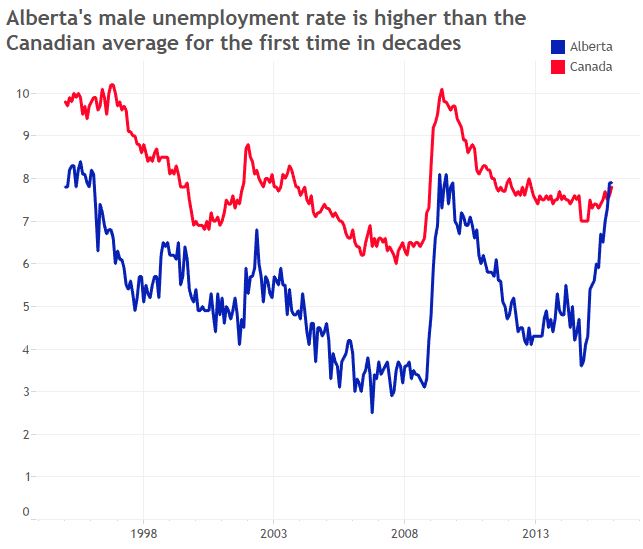
Male unemployment in Alberta more than doubled within a year. It hasn’t been this high since 2009.
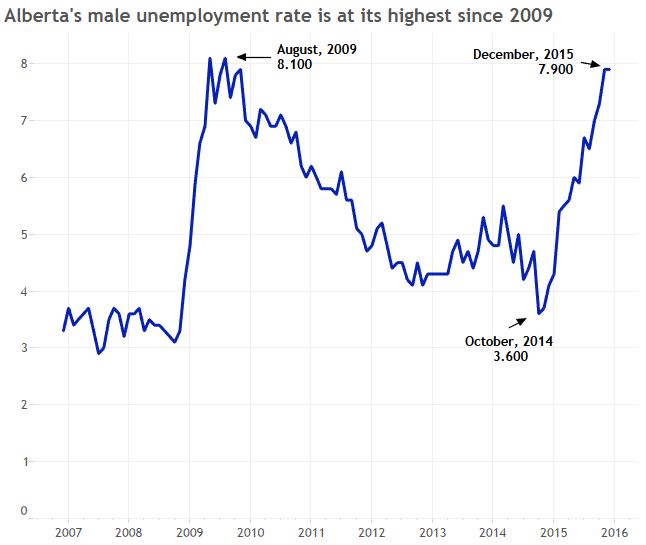
- Life in the forest: How Stanley Park’s longest resident survived a changing landscape
- ‘They knew’: Victims of sexual abuse by Ontario youth leader sue Anglican Church
- Carbon rebate labelling in bank deposits fuelling confusion, minister says
- Buzz kill? Gen Z less interested in coffee than older Canadians, survey shows
Alberta’s male unemployment rate is now higher than those of B.C., Saskatchewan, Manitoba and — this one hurts — Ontario.
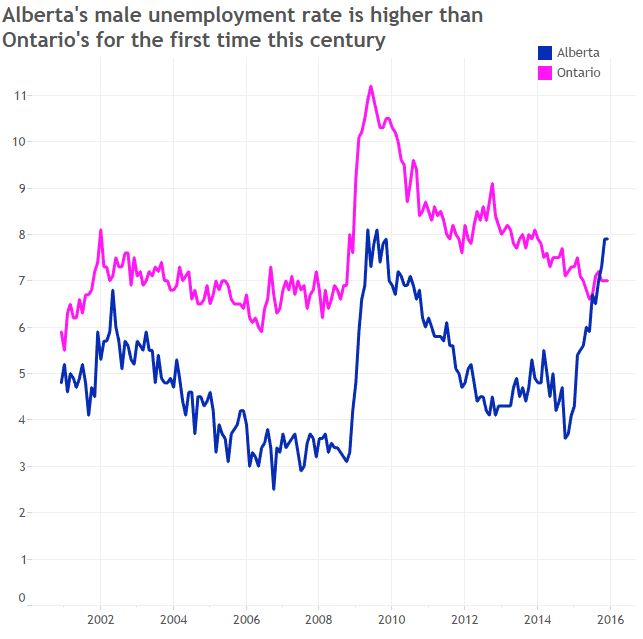
At the same time, the number of Albertans receiving EI has also risen — from 28,790 to 57,980 within a year.
Again, it gets grimmer for men: The percentage of working Alberta men receiving EI almost tripled in 12 months.

And that’s only the unemployed people who qualify for EI. In Alberta, that’s barely a third of the total number of people who are out of work.
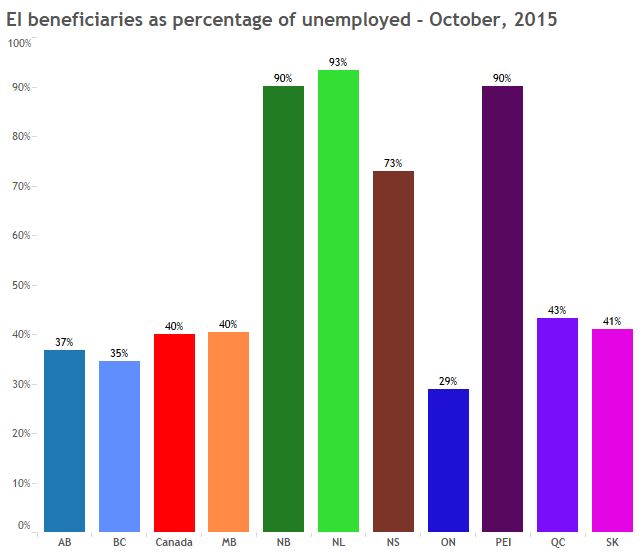
We’re also seeing different employment situations in Alberta’s biggest cities.
Unemployment has risen in both Calgary and Edmonton, but much more dramatically in Cowtown — from 4.6 per cent in November, 2014 to 7 per cent in December, 2015.
Edmonton, on the other hand, had a much smaller jump – from 5.2 per cent unemployment in November, 2014 to 6.2 per cent last month.
Alberta’s Treasury Board chalked up that divergence to a combination of public-sector jobs, and steep declines in Calgary’s transportation, scientific and technology sectors.
But most Edmonton industries fared better last year, the board noted on Twitter Friday.
Calgary’s “economy was hit harder by oil prices because of the higher concentration of energy-related activity.”
//platform.twitter.com/widgets.js
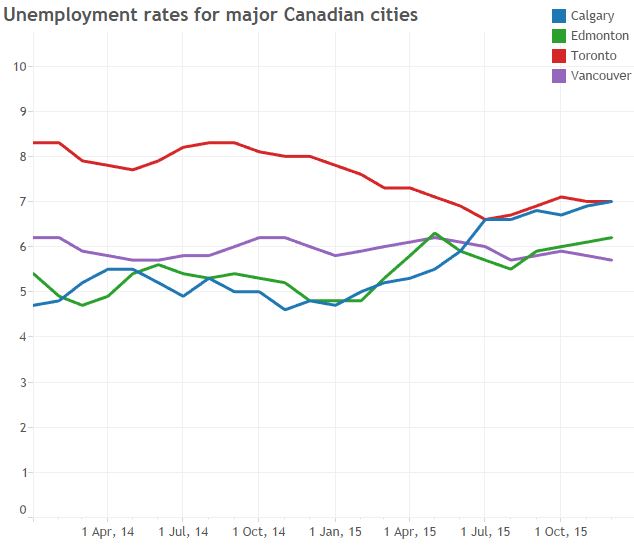
The people hit hardest by Alberta’s downturn are men with some high school education — almost one in five (17 per cent) were unemployed as of December, 2015. If you had a high school diploma, your chances of getting a job become way better: 9.2 per cent of Alberta men who’d graduated from high school were out of work and looking for a job last month.
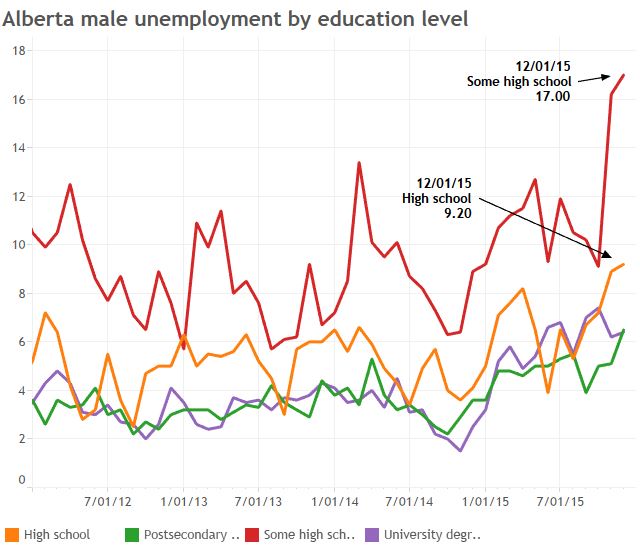
Interestingly, the high school gap is significantly greater in Alberta than elsewhere in Canada, where the unemployment rate for people with some high school is lower (14.8 per cent) and the unemployment rate for high school grads slightly higher (9.3 per cent).
And women in Alberta, while their unemployment rates have risen over the past couple of years, are doing significantly better — unemployment-wise, at least — than their male counterparts. Women of all education levels were less likely to be out of a job and looking for work than men in the province.
In fact, women with high school diplomas boasted lower unemployment rates than men with university degrees.
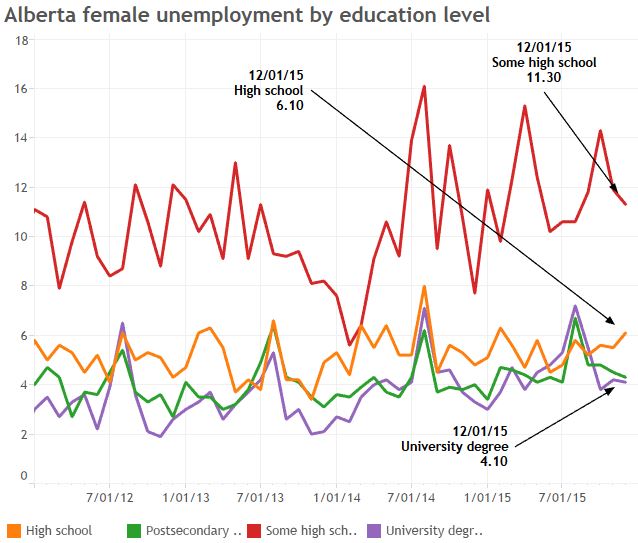
All that said, Alberta’s no basket case: Its overall unemployment rate remains a smidgen below the national average (albeit above both Ontario and B.C.).
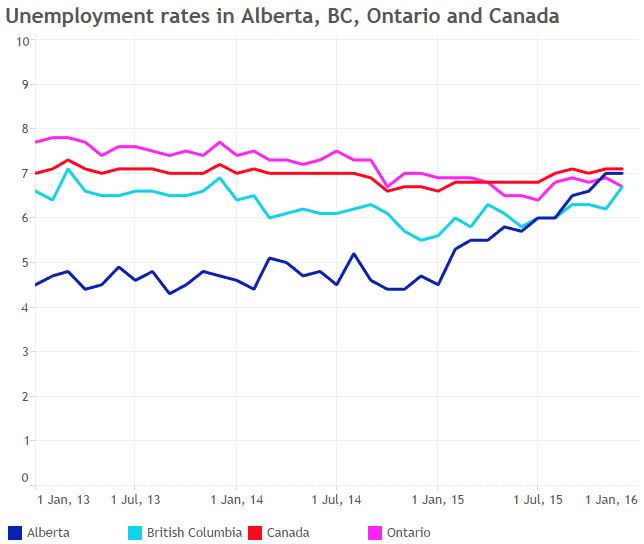
But if oil prices don’t start moving upward — or at least stop tanking — soon, the provincial government’s books may be in serious trouble.
As University of Calgary economist Trevor Tombe has noted, the province’s revenue streams are far less diversified than the province’s economy.
“If the price of oil stays at its current level,” he said last month, “the only way to eliminate the deficit would be to have very tight spending restraints or spending cuts. … That’s not ideal.”
Or, of course, Alberta could do what every other province has done, and what numerous economists argue makes the most economic sense, and that’s put a sales tax in place.
But Premier Rachel Notley preemptively ruled that out.
“As an economist I think it’s quite a sensible policy option that should be considered and should be discussed in a responsible and respectful way,” Tombe said.
But “there’s something that makes a sales tax politically difficult. And I’m not sure what that is.”
Tell us your stories: Have you been affected by Alberta’s economic downturn? We want to hear from you.
Note: We may use what you send us in future stories and we may be in touch if we have questions. But we won’t publish your name without your permission.



Comments